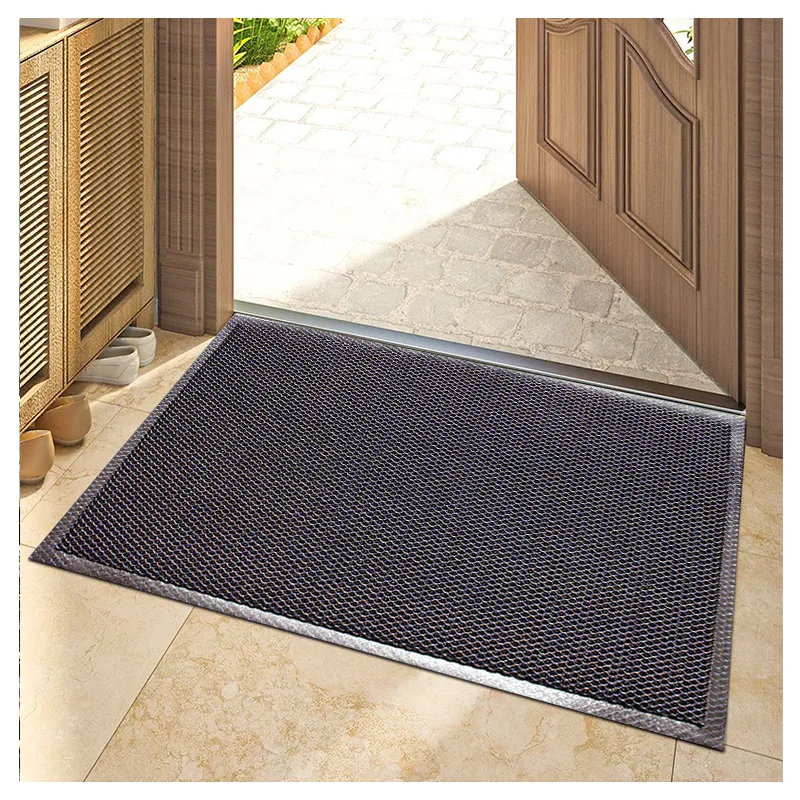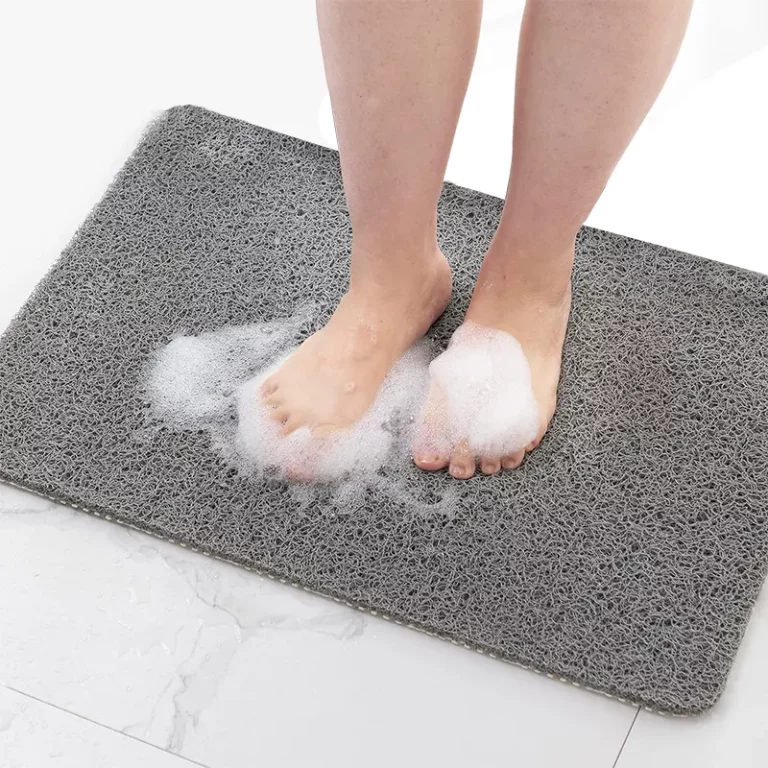The Comprehensive Guide to the Anti-Fatigue Mat Market Size in 2025
Discover how the anti-fatigue mat market is evolving in 2025. This comprehensive guide delves into the market size, key trends, and growth opportunities. Whether you’re a business owner, industry professional, or consumer, understanding the dynamics of the anti-fatigue mat market can help you make informed decisions.

Table of Contents
What Is the Anti-Fatigue Mat Market?
The anti-fatigue mat market encompasses the production, distribution, and sales of anti-fatigue mats—specialized mats designed to reduce fatigue caused by prolonged standing. These mats are essential in various industries, including manufacturing, healthcare, and retail.
Anti-fatigue mats are engineered to provide cushioning and support, promoting better posture and comfort. They are widely used in workplaces to enhance employee well-being and productivity, making them a crucial component in ergonomic solutions.
How Big Is the Global Anti-Fatigue Mat Market in 2025?
As of 2025, the global anti-fatigue mat market size has reached significant levels, reflecting substantial market growth. According to industry reports, the anti-fatigue mat market was valued at approximately USD 2.5 billion in 2022 and is expected to grow at a growth rate of 5% during the forecast period of 2023 to 2025.
This growth is driven by increasing awareness of workplace ergonomics, the need to reduce fatigue among workers, and the rising adoption of anti-fatigue mats in both industrial and commercial settings.

Alt text: Factory Supply Luxury elastic mesh door mats
Explore our Factory Supply Luxury Elastic Mesh Door Mats for stylish and durable entrance solutions.
What Are the Key Market Trends Influencing Growth?
Several market trends are shaping the anti-fatigue mat market:
Increased Adoption of Ergonomic Products
- Demand for anti-fatigue mats is rising as employers invest in ergonomic solutions to enhance employee comfort and productivity.
- Growth opportunities exist for manufacturers focusing on innovative and customizable anti-fatigue mats.
Technological Advancements
- Anti-fatigue mats are made using advanced materials like gel, foam, and rubber to improve comfort and durability.
- Innovations include hygienic anti-fatigue mats with antimicrobial properties for clean environments.
Expansion of Distribution Channels
- The rise of e-commerce and online distribution channels has made it easier to purchase anti-fatigue mats, contributing to market expansion.
- Retailers are leveraging online platforms to reach a broader customer base.
Why Is Demand for Anti-Fatigue Mats Increasing?
The demand for anti-fatigue mats is on the rise due to:
Workplace Health and Safety
- Employers recognize the need to reduce fatigue and prevent musculoskeletal disorders among employees who stand for long periods.
- Anti-fatigue mats help in complying with occupational health and safety regulations.
Productivity and Employee Well-being
- Mats provide comfort, leading to increased productivity and job satisfaction.
- Businesses are willing to invest in anti-fatigue mats as part of their ergonomic initiatives.
Growing Awareness in Residential Use
- Homeowners are adopting anti-fatigue mats for use in the kitchen, workshops, and other areas where prolonged standing occurs.
- The benefits of anti-fatigue mats are becoming well-known among consumers.
How Does the Distribution Channel Impact Market Size?
Distribution channels play a crucial role in the anti-fatigue mat market size:
Online Retail Platforms
- The convenience of purchasing anti-fatigue mats online contributes to market growth.
- Consumers can purchase anti-fatigue mats from the comfort of their homes, boosting sales.
Specialty Stores and Physical Retail
- Availability of anti-fatigue mats in ergonomic and office supply stores allows customers to experience products firsthand.
- Physical stores remain an important distribution channel for reaching certain customer segments.
Direct Sales to Businesses
- Manufacturers often engage in direct sales to large enterprises requiring bulk orders.
- This approach impacts the market dynamics and market share of companies within the anti-fatigue mat market.

What Does the Market Analysis Reveal About Future Growth?
Market analysis indicates promising prospects for the anti-fatigue mat market:
Positive Market Growth
- The market is expected to continue its upward trajectory during the forecast period.
- Factors like technological innovation and expanding applications contribute to market expansion.
Emerging Markets
- Growth in developing regions presents new growth opportunities.
- Increased industrialization and focus on worker safety in these regions drive the adoption of anti-fatigue mats.
Challenges and Opportunities
- While competition intensifies, companies that innovate and provide quality products will capture greater market share.
- Addressing environmental concerns through sustainable materials may offer a competitive edge.
Which Industries Are Driving the Anti-Fatigue Mat Market?
Several industries are instrumental in the growth of the anti-fatigue mats market:
Manufacturing and Industrial Sectors
- Anti-fatigue mats are essential in factories and assembly lines where workers stand for extended periods.
- Mats help improve safety and reduce physical strain.
Healthcare Facilities
- Hospitals and clinics utilize anti-fatigue mats to provide comfort to medical staff.
- Hygienic anti-fatigue mats meet the stringent cleanliness standards required in healthcare settings.
Commercial Kitchens and Hospitality
- Chefs and kitchen staff benefit from anti-fatigue mats that reduce leg and back fatigue.
- The hospitality industry’s focus on staff well-being drives the demand for anti-fatigue mats.
How Do Anti-Fatigue Mats Benefit Kitchens and Workspaces?
Anti-fatigue mats offer significant advantages in both residential and commercial settings:
Comfort in the Kitchen
- Anti-fatigue mats in kitchens help reduce discomfort during food preparation and cooking.
- They are designed to be spill-resistant and easy to clean.
Enhanced Workplace Ergonomics
- In offices with standing desks, using an anti-fatigue mat can alleviate pressure on the feet and legs.
- Mats provide subtle movements that improve circulation and posture.
Health Benefits
- Anti-fatigue mats contribute to reducing the risk of chronic conditions associated with prolonged standing.
- They are part of a broader strategy to create healthier work environments.

Alt text: Quick drying bathroom mats
Enhance comfort in your home with our Quick Drying Bathroom Mats designed for safety and style.
What Are the Market Dynamics Affecting the Anti-Fatigue Mat Industry?
Several market dynamics influence the anti-fatigue mat industry:
Competitive Landscape
- The anti-fatigue mats market competitive landscape includes both established companies and new entrants.
- Businesses focus on innovation, quality, and customer service to increase their market share.
Technological Innovations
- Advances in materials and manufacturing processes lead to more effective and durable anti-fatigue mats.
- Mats are designed with features like non-slip surfaces and antimicrobial coatings.
Regulatory and Environmental Factors
- Compliance with health and safety regulations drives the demand for anti-fatigue mats.
- Environmental concerns lead to the development of mats made from sustainable or recyclable materials.
What Is the Competitive Landscape of the Anti-Fatigue Mats Market?
The anti-fatigue mats market is populated by several key players:
Major Companies
- American Floor Mats: Offers a wide range of anti-fatigue mats for different industries.
- Ergonomic Solutions: Specializes in ergonomic products, including anti-fatigue mats.
- Eagle Mat: Provides commercial and industrial matting solutions.
Strategies for Growth
- Companies invest in research and development to create innovative products.
- Expanding distribution channels, including online platforms, helps reach a broader customer base.
Market Share and Influence
- Market leaders focus on quality and customization to maintain and grow their market share.
- Collaborations and partnerships with businesses enhance their presence in the global anti-fatigue mat market.
Conclusion
The global anti-fatigue mat market is experiencing significant growth in , driven by increased awareness of ergonomic practices, technological advancements, and expanding applications across various industries. The market size reflects the importance of anti-fatigue mats in enhancing comfort, productivity, and health. With ongoing innovation and a focus on quality, the anti-fatigue mat market presents numerous opportunities for businesses and consumers alike.
Key Takeaways
- The anti-fatigue mat market size reached approximately USD 2.5 billion in 2022 and is expected to grow steadily through .
- Demand for anti-fatigue mats is driven by a need to reduce fatigue, comply with safety regulations, and improve workplace ergonomics.
- Market trends include technological advancements, expansion of distribution channels, and increased adoption in various industries.
- Industries such as manufacturing, healthcare, and hospitality are key drivers of market growth.
- The competitive landscape is marked by innovation and a focus on quality, with companies aiming to expand their market share.
- Anti-fatigue mats offer significant benefits in both professional and residential settings, contributing to health and productivity.
For more ergonomic and stylish mat solutions, explore our products:
- Kitchen Mats – Enhance comfort while cooking.
- Non-Slip Stair Mats – Ensure safety on your stairs.
- Draining PVC Bath Mats – Keep your bathroom dry and secure.
Invest in quality anti-fatigue mats today to promote health and productivity in your environment.





